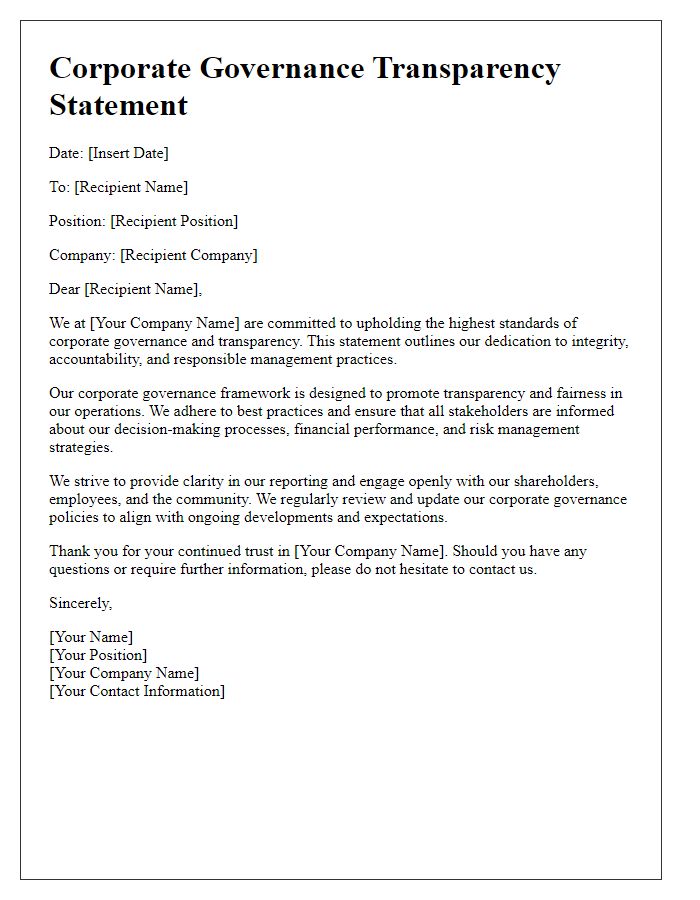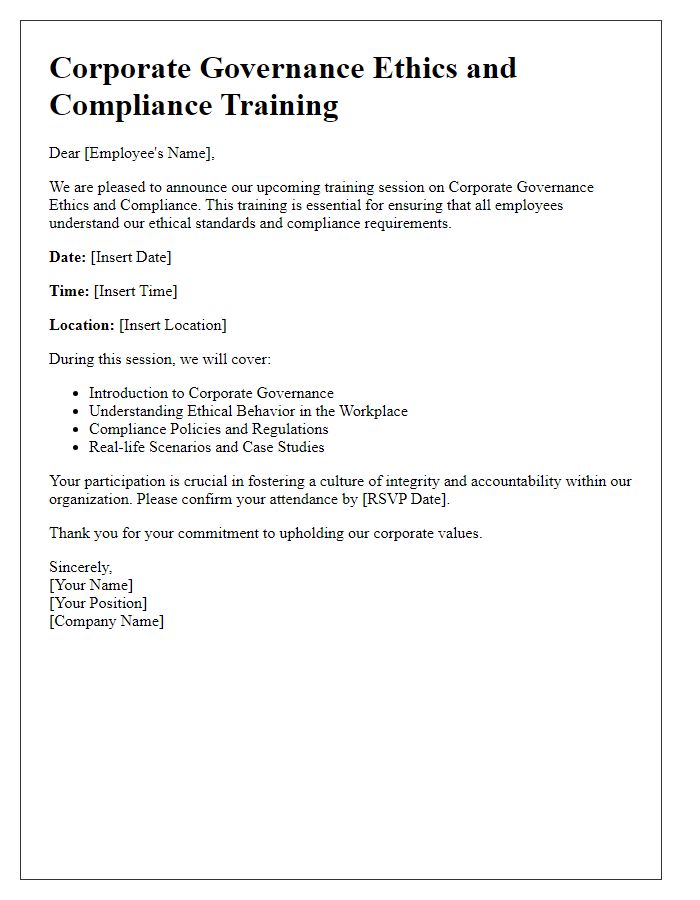In today's business landscape, effective corporate governance is more important than ever for building trust and ensuring transparency. Organizations must navigate complex regulations while fostering an ethical environment that aligns with stakeholder interests. By implementing robust governance practices, companies can not only protect their reputation but also enhance their overall performance. Join us as we delve deeper into the best practices and strategies for corporate governance disclosures that can help your organization thrive.

Transparency and Accountability Metrics
Corporate governance disclosures play a critical role in enhancing transparency and accountability within organizations, particularly in publicly traded companies. Metrics such as the percentage of independent board members (ideally 50% or more) and the frequency of board meetings (quarterly minimum) provide stakeholders with insight into governance practices. Additionally, the existence of committees, such as audit and compensation committees, along with the disclosure of their members' qualifications, further ensures oversight and ethical decision-making. Key performance indicators (KPIs) delineating executive compensation, aligned with company performance (based on annual financial reports), serve to underscore accountability to shareholders. Furthermore, compliance with regulatory frameworks, such as the Sarbanes-Oxley Act of 2002 in the United States, mandates strict financial reporting accuracy and internal control assessments, reinforcing stakeholder trust.
Board Structure and Independence
The Board Structure and Independence of a corporation play a crucial role in ensuring effective governance and accountability. A typical corporate board, comprising typically 5 to 15 members, should include a disparate mix of executive (internal), non-executive (external), and independent directors (unaffiliated with the company's management or major shareholders). For instance, at publicly traded companies (exchange-listed), regulations require that at least 50% of the board consists of independent directors, enhancing impartial decision-making. Specific committees such as the Audit, Compensation, and Nominating Committees must be entirely composed of independent directors to maintain integrity and objectivity in oversight roles. Moreover, independence is defined by various criteria, including the absence of significant financial ties, familial connections to management, or previous employment with the company. Governance practices in regions like the United States, Europe, and Asia can vary, influencing structural composition and independence definitions, thus impacting shareholder trust and regulatory compliance.
Risk Management Strategies
Corporate governance disclosures related to risk management strategies are essential for ensuring transparent and accountable operations within organizations. Effective risk management frameworks, like the COSO ERM framework, guide organizations in identifying, assessing, and mitigating potential risks, including operational, financial, and strategic risks. These frameworks outline procedures for regular risk assessments, establishing risk tolerance levels, and implementing robust internal controls. Institutions listed on stock exchanges, such as the New York Stock Exchange (NYSE), emphasize the significance of disclosing risk management strategies, including crisis management plans for unexpected events like natural disasters or cybersecurity breaches, to maintain stakeholder trust and comply with regulatory requirements. Furthermore, the integration of risk management into the decision-making process helps foster a culture of risk awareness, enabling businesses in various industries to navigate uncertainties and maintain operational effectiveness.
Ethical Practices and Code of Conduct
Corporate governance disclosures emphasize the importance of ethical practices and a code of conduct within organizations, ensuring transparency and accountability. These documents often outline principles such as integrity, compliance with laws, and responsible decision-making. Organizations like the Sarbanes-Oxley Act of 2002 in the United States mandate stringent guidelines for financial reporting and corporate governance. A well-implemented ethical framework can enhance stakeholder trust and mitigate risks associated with unethical behavior. Governance codes from entities like the International Corporate Governance Network (ICGN) provide guidelines that organizations worldwide can adapt to foster a culture of ethical behavior, aligning stakeholders' interests and long-term organizational success.
Stakeholder Engagement and Communication
Stakeholder engagement is crucial for effective corporate governance, ensuring transparency and accountability, especially in publicly traded companies. Open communication channels to stakeholders, including shareholders and employees, promote trust and collaboration, often conducted through annual general meetings (AGMs), investor calls, and online platforms. Specific feedback mechanisms, such as surveys and dedicated email addresses, play a vital role in understanding stakeholder concerns. Regulatory frameworks, like the Sarbanes-Oxley Act in the United States, emphasize the importance of accurate and timely disclosures, reinforcing the need for companies to remain transparent about their financial health and operational practices. Engaging with the community through sustainable initiatives can also enhance corporate reputation and stakeholder loyalty, helping to align company objectives with societal expectations.













Comments